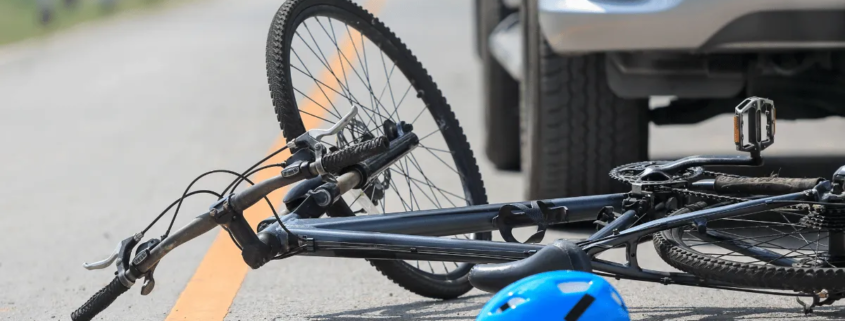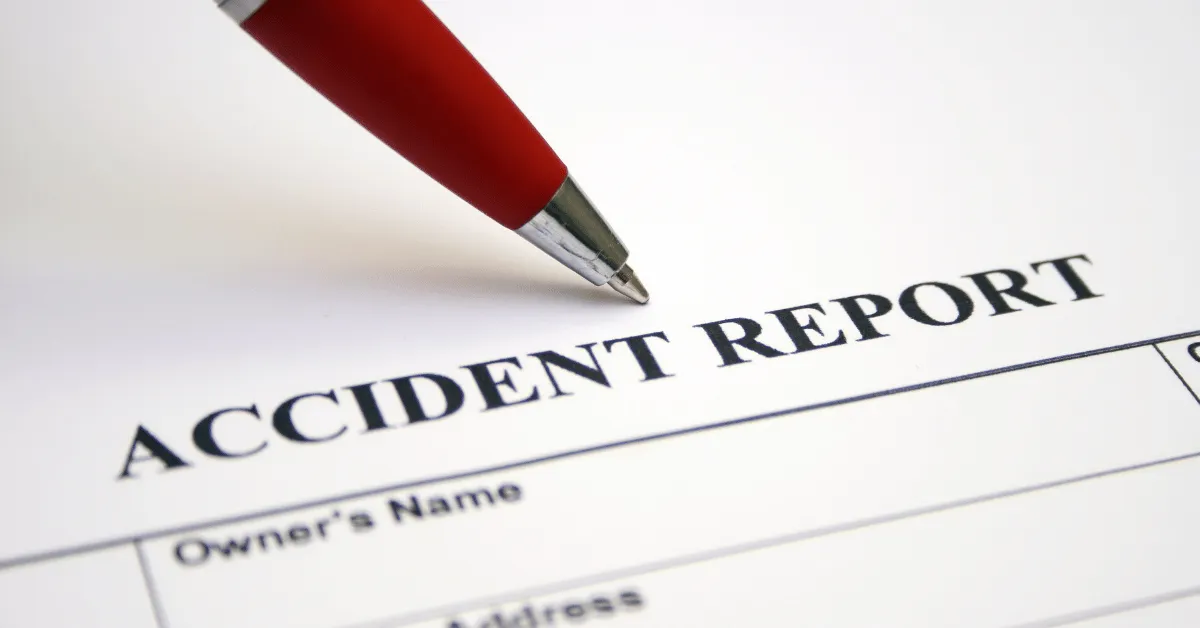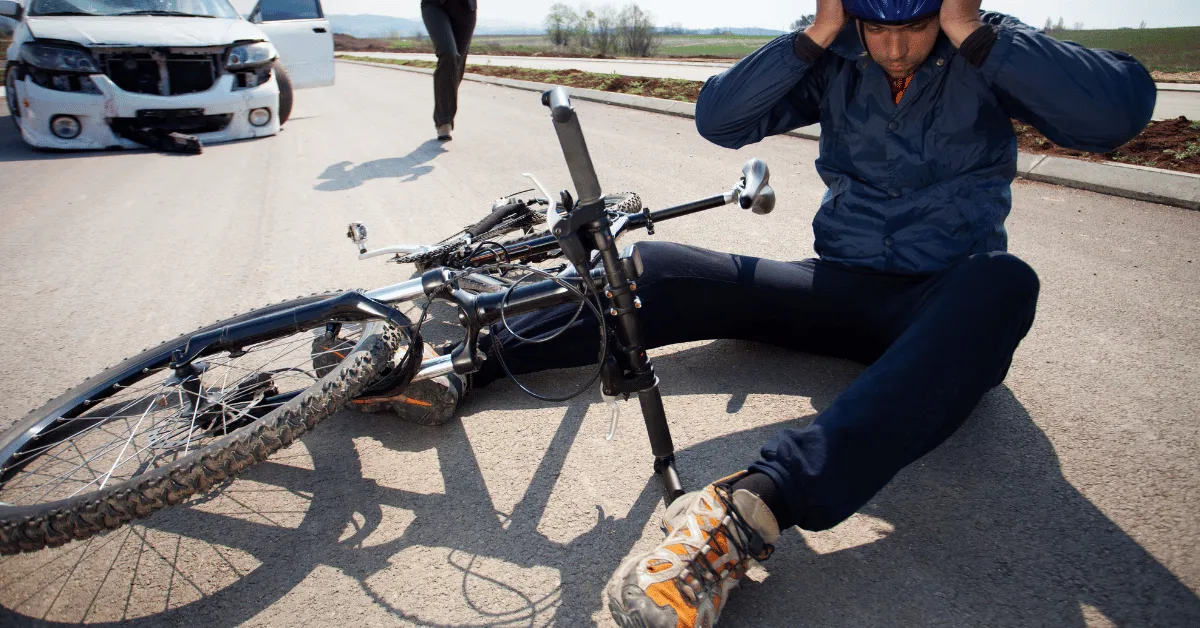Cyclists in Oregon share the road with thousands of cars daily, and unfortunately, collisions happen. When a bicycle accident involves a motor vehicle, the outcome can be devastating for the cyclist. Unlike drivers, bicyclists have little protection from impact, which often results in serious injuries. If you’ve been hit by a car while riding your bike, knowing what steps to take is critical for both your recovery and your legal rights.
At Ryan Hilts Personal Injury Law, we understand the unique challenges that bicycle accident victims face. In this article, we’ll walk through what to do immediately after the crash, how to protect your case, and when to seek legal help.
Also Read:
- Staying Safe on Portland’s Roads: Preventing Personal Injuries and Accidents
- 10 Reasons Why You Should Hire an Injury Attorney
TL;DR:
After a bicycle accident with a car, prioritize medical care, call the police, gather evidence, report the crash, and consult an experienced attorney to protect your rights.
Why Bicycle Accidents Are So Dangerous
Compared to car crashes, bicycle accidents carry a far higher risk of serious or even life-threatening injury. Cars have frames, airbags, and seatbelts to protect occupants; bicycles do not. Cyclists are completely exposed to the force of the impact, which means:
- Even “low speed” collisions can cause broken bones, concussions, or spinal injuries.
- Accidents at intersections or in high-traffic areas often result in multiple points of impact (e.g., being hit, then hitting the pavement).
- Injuries may not be obvious right away—internal bleeding, soft tissue injuries, and head trauma sometimes surface hours or days later.
Because of these risks, it’s crucial for bicyclists to treat any crash with a car as a serious medical and legal event.
Immediate Steps After a Bicycle Accident
The first moments after a crash can be confusing. Many bicyclists report being in shock and unsure of what to do. Having a mental checklist of priorities can help:
- Prioritize safety. If possible, move out of the roadway to avoid further injury from oncoming traffic.
- Call 911 immediately. Reporting the accident ensures that both police and medical professionals arrive at the scene.
- Do not try to “walk it off.” Cyclists sometimes underestimate their injuries due to adrenaline. Get checked out by paramedics even if you think you’re fine.
- Exchange information with the driver. Get their name, phone number, driver’s license, license plate, and insurance details.
- Avoid discussing fault. Even casual remarks like “I didn’t see you either” can be twisted later by insurance companies. Stick to facts only.
Taking these steps can safeguard both your health and your case.
The Importance of Gathering Evidence
Evidence is the foundation of a successful bicycle accident claim. If you’re able, or if someone else can assist you, gather the following at the scene:
- Photos and videos: Document your bicycle, the car, traffic signals, skid marks, road conditions, and your injuries.
- Witness information: Collect names and phone numbers of anyone who saw the crash. Independent witnesses are often more persuasive than driver or victim statements alone.
- Police report details: Ask the responding officer for a case number so you can access the report later.
- Medical documentation: Even your first paramedic report or ER intake sheet can serve as crucial evidence.
Remember, once the scene clears, much of this information is gone forever. A strong claim often hinges on what’s gathered in those first few minutes.
Reporting the Accident Under Oregon Law
Oregon requires reporting of motor vehicle accidents that involve injuries, fatalities, or more than $2,500 in property damage. Bicycle accidents almost always meet at least one of these criteria. Filing a police report is not optional—it’s a critical legal step.
Why this matters:
- Insurance adjusters often rely on official police reports when determining liability.
- Without a report, the at-fault driver may later try to deny the accident happened or shift blame.
- A documented report strengthens your case if you pursue compensation.
Always request a copy of the police report for your records.
Getting Medical Care and Tracking Recovery
Medical care should never be delayed after a bicycle accident. Even if you feel “okay,” you may have hidden injuries. Some tips for handling medical recovery:
- Visit an ER or urgent care immediately. This establishes a baseline for your injuries.
- Schedule follow-up appointments. Specialists may identify issues that the ER missed.
- Track your symptoms. Keep a daily log of pain levels, dizziness, headaches, or mobility issues.
- Save all bills and receipts. From hospital visits to prescription painkillers, these will help calculate damages.
Think of your medical records as both a healing roadmap and a legal record. They will prove invaluable later.
Understanding Insurance After a Bicycle Accident
Dealing with insurance companies is one of the most stressful parts of recovery. Here’s what to know in Oregon:
- Personal Injury Protection (PIP): Oregon law requires drivers to carry PIP insurance, which may cover your medical bills—even if you weren’t driving.
- Driver’s liability coverage: The at-fault driver’s insurance is ultimately responsible for your damages.
- Your own health insurance: In many cases, health insurance will step in for immediate treatment, later to be reimbursed through settlement.
Tips for insurance interactions:
- Never give a recorded statement without legal advice.
- Avoid signing medical release forms from insurers until you consult an attorney.
- Be wary of quick settlement offers. These often come before you know the full extent of your injuries.
Why Legal Help Is So Important
After a bicycle accident with a car, victims often face mounting medical bills, lost wages, and physical pain. Unfortunately, insurance companies are motivated to minimize payouts. An attorney levels the playing field.
What a bicycle accident lawyer can do for you:
- Investigate thoroughly—review traffic camera footage, interview witnesses, and consult accident reconstruction experts.
- Negotiate with insurance companies to prevent lowball offers.
- Calculate damages accurately by factoring in long-term care, lost earning potential, and non-economic damages like pain and suffering.
- Represent you in court if the insurer refuses a fair settlement.
Hiring a lawyer isn’t about being “litigious”—it’s about protecting your right to recover from someone else’s negligence.
Compensation You May Be Entitled To
Every case is unique, but bicycle accident victims often qualify for several categories of damages, including:
- Medical expenses: ER visits, hospital stays, physical therapy, surgeries, and long-term rehabilitation.
- Lost income: If you miss work during recovery or suffer reduced earning capacity.
- Property damage: Repair or replacement of your bicycle and gear.
- Pain and suffering: Compensation for physical pain, trauma, or diminished quality of life.
- Future expenses: Anticipated costs of ongoing care or adaptive equipment.
Insurance companies rarely volunteer the full picture of what you’re entitled to—this is where legal advocacy makes a real difference.
Common Mistakes to Avoid After a Bicycle Accident
Many bicyclists unintentionally weaken their claims by making avoidable mistakes, such as:
- Leaving the scene without calling the police. This creates gaps in documentation.
- Failing to see a doctor right away. Gaps in medical care give insurers leverage to argue your injuries aren’t serious.
- Posting about the accident on social media. Insurance adjusters may use your posts against you.
- Accepting the first settlement offer. These offers almost always undervalue your case.
By avoiding these mistakes, you keep your case strong and your rights protected.
Long-Term Considerations After a Bicycle Accident
Recovery doesn’t end when the bruises heal. Bicycle accidents can leave lasting consequences:
- Emotional trauma: Many cyclists struggle with fear or anxiety about riding again.
- Permanent injuries: Some victims live with chronic pain or reduced mobility.
- Financial impact: Medical bills and lost wages can affect a family’s stability for years.
Working with an attorney ensures that these long-term effects are factored into your settlement or verdict, not just your immediate expenses.
Conclusion: Protecting Your Rights After a Bicycle Accident
Being hit by a car while riding your bike is terrifying and overwhelming. But taking the right steps can protect your health and your future. Seek medical care, gather evidence, report the crash, and speak with an experienced lawyer before dealing with insurance companies.
At Ryan Hilts Personal Injury Law, we’ve helped countless bicycle accident victims secure fair compensation. If you or a loved one has been injured, don’t wait—get the guidance you need to move forward with confidence.
FAQs
What should I do immediately after being hit by a car while cycling?
Call 911, seek medical care, and gather evidence at the scene if you’re able.
Do I need to file a police report for a bicycle accident?
Yes, especially if injuries or significant damage occurred. A police report helps establish liability.
Who pays for my medical bills after a bicycle accident in Oregon?
Your insurance may provide PIP coverage, but the at-fault driver’s insurance is ultimately responsible.
Can I recover damages if I wasn’t wearing a helmet?
Yes, though not wearing a helmet may affect compensation if head injuries are involved.
How soon should I contact an attorney?
As soon as possible—before speaking with insurance companies—to protect your rights and avoid mistakes.





